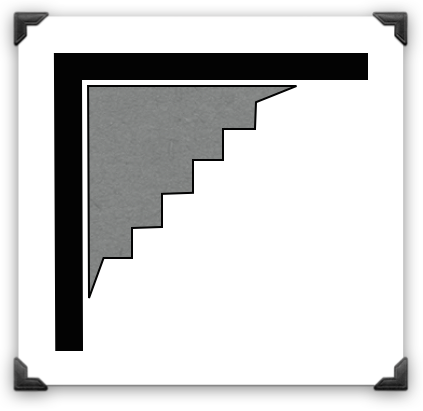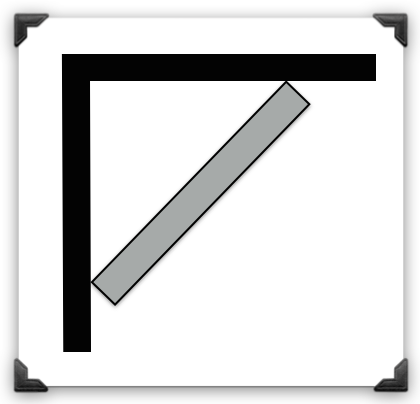Porous absorber bass traps (or broadband absorbers) are the first-line-of-defense when tackling general problems with room acoustics.
They can be made from a variety of materials such as:
- acoustic foam
- fiberglass (glass wool)
- rockwool (mineral wool)
And they’re extremely effective at taming common problems such as:
- room modes
- standing waves
- flutter echo
- speaker boundary interference response
The reason they’re so versatile is…they offer excellent broadband absorption, meaning they work well across the entire frequency spectrum.
Yet despite their versatility, porous absorbers have one BIG flaw: They can’t absorb the lowest bass frequencies unless…
- They’re built super-thick, or…
- They’re spaced far off the wall
And here’s why:
Porous absorption (aka velocity-based absorption) works most effectively where a sound wave is at maximum velocity, which in your room, is 1/4 wavelength from the wall. For example, a 100 Hz wave is 11.3 feet long, so its point of maximum velocity is 2.8 feet off the wall. The problem is, few rooms can spare that much space for acoustic treatment. So manufacturers often build them really thick instead.
In practice, most porous absorber bass traps that are 8″ thick or deeper can absorb pretty well down to 100hz and below that their performance tapers off unless you use a LOT of them. Generally if you’re using 5″ or 6″ studio monitors without a subwoofer, you’re not putting out a lot of low-end energy into your room, and even a couple of good porous bass traps will give you immense results.
Choosing YOUR Strategy
For home studios, the standard advice is to skip the resonant absorbers and focus entirely on porous absorbers.
And here’s why:
Effective use of resonant absorption often requires a custom-designer to evaluate the room, diagnose problems, and build a custom trap specifically for that room.
And poorly built…it may be totally ineffective, and even cause problems by resonating at the wrong frequency.
Porous absorption on the other hand, is a “one-size-fits-all” solution, and is far cheaper overall.
Now assuming you’re sold on porous absorption, the next question is whether to use:
- triangular corner bass traps, or…
- flat panel bass traps
Corner bass traps have the advantage of more mass, which as we learned earlier, is one way to effectively tame low-end frequencies.

Panel bass traps use the other method of low-end absorption, by leaving an open “air-gap” between the panel and the wall. With this strategy, you can cover more surface area, using less material.

And while each one has its advantages, the truth is…either works fine.
Choosing a Starting Point
If you just checked out my recommendations, and weren’t too happy about the prices…you’re probably wondering at this point:
How many of these do I really need?
And unfortunately the truth is…most rooms can progressively benefit from as many as two dozen or more.
But since few people can afford that many, I recommend starting with either 4 or 8 at first, then possibly adding more later on…
- when you can afford it, and…
- if you deem it necessary.
Mounting Them in Your Room

Just like any element of acoustic treatment…
Where you position your bass traps has a huge impact on how well they perform.
The standard starting points to mount your traps are the trihedral corners of the room (shown in the picture as red dots).
If you currently have at least 8 traps, simply put one in each corner. If you only have 4, put them in the upper 4 corners to save yourself floor space.
If that’s all you have, then you’re done.
If you still have more, the next step is to stack them in columns along the vertical dihedral corners, as shown in the picture below.

And finally, if you still have more to work with, mount them on the upper dihedral corners of the room, as shown in the picture below.

At this point, the amount of low-end absorption in the room is probably as good as it’s gonna get.
And while you won’t need nearly this many bass traps to get a decent sound from your room…
It’s always an option if you choose to take it that far.
